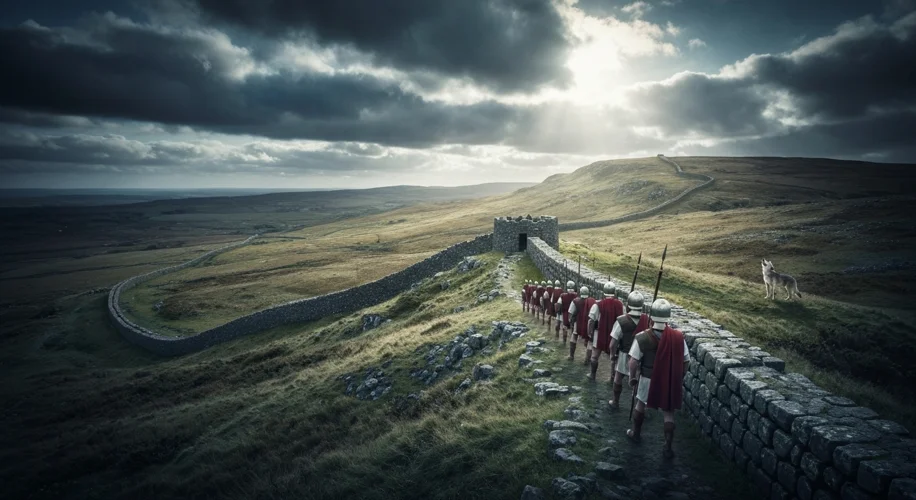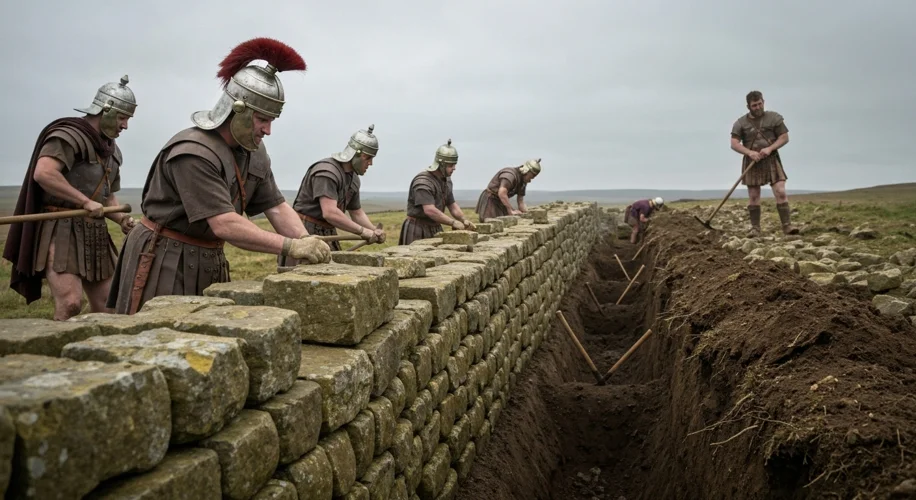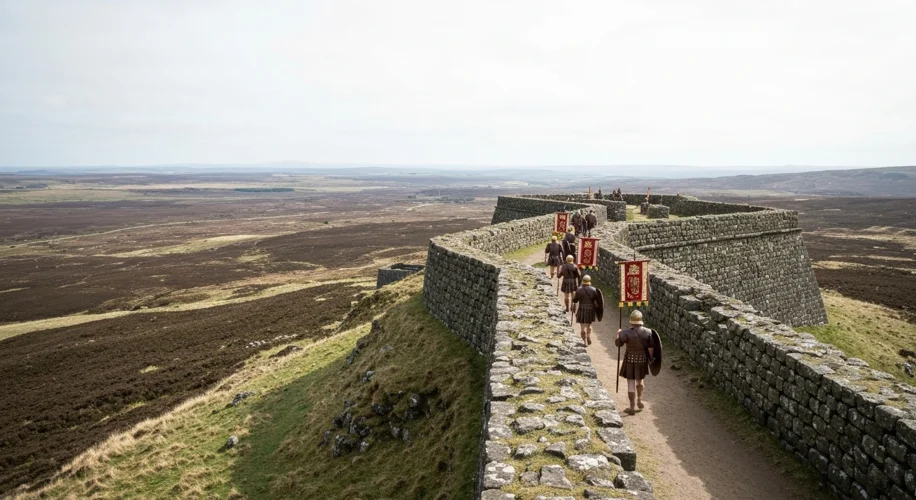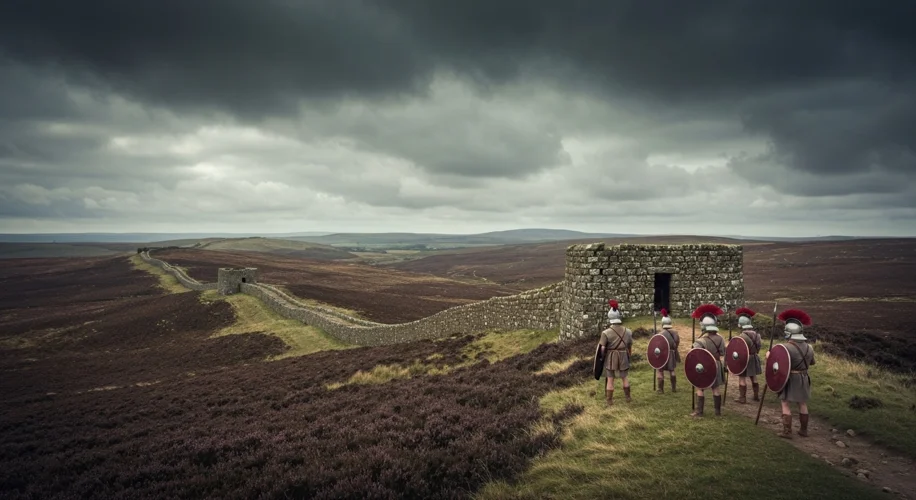Imagine the biting wind whipping across the desolate moors, carrying the scent of damp earth and the distant bleating of sheep. Now, picture thousands of men, a vast human tide, toiling under this unforgiving sky. This was the reality in Britannia, starting in AD 122, as the Roman Empire embarked on one of its most ambitious and enduring projects: Hadrian’s Wall.
For centuries, Rome had expanded its dominion, a vast empire built on military might, engineering genius, and an insatiable appetite for order. But the northern reaches of Britannia, a land inhabited by fierce tribes like the Brigantes and Caledonians, remained a persistent thorn in Rome’s side. These were not the settled peoples of Gaul or Hispania; these were warriors who valued their freedom and viewed the Roman presence as an unwelcome intrusion. Emperor Hadrian, a man known for his intellectual curiosity and a deep appreciation for Greek culture, ascended to the imperial throne in AD 117. Unlike his predecessors who focused on expansion, Hadrian was more pragmatic. He believed in consolidating the empire’s existing borders rather than pushing them further into uncontrollable territories. Britannia, with its unruly northern frontier, was a prime candidate for such a strategy.

The decision to build a monumental wall was revolutionary. It wasn’t just a physical barrier; it was a statement. A clear demarcation of Roman power, a line drawn in the sand – or rather, in stone and turf – separating the civilized world of Rome from the wild lands beyond. The task was monumental. The wall would stretch for an astonishing 80 Roman miles (approximately 73.5 modern miles) from the banks of the River Tyne in the east to the shores of the Solway Firth in the west. It was conceived as a multi-layered defense system, not just a simple barrier.
At its heart was the stone wall itself, a formidable structure often reaching 15 feet high and 8 feet thick, punctuated by a series of forts, or ‘milecastles’, built at every Roman mile. Between these milecastles, smaller turret structures provided observation posts and shelter for small detachments of soldiers. To the north of the wall, a deep ditch, known as a vallum, was dug, further complicating any frontal assault. To the south, a broad earthwork, another vallum, served to channel any approaching forces towards the fortified milecastles and to prevent easy access from the rear.
But who were the men tasked with this colossal undertaking? Legions, the backbone of the Roman army, were deployed. Soldiers from across the empire – men from Italy, Gaul, Spain, and even North Africa – found themselves stationed in the damp, often hostile environment of northern Britain. They were engineers, masons, excavators, and laborers, their skills honed by years of campaigning and construction. Imagine the sheer physical effort involved. Quarrying stone, shaping blocks, hauling materials over rough terrain, digging ditches, and building structures that would withstand centuries of weather and potential attack. Their daily lives were a testament to Roman discipline and organization. They lived in garrisons, drilled regularly, and maintained the fortifications, their existence a constant reminder of Roman authority.

The construction wasn’t a single, swift event. It was a phased process, evolving over decades. Initially, much of the wall in the west was built from turf, a faster method but less durable. Later, this was largely replaced by stone, a more permanent and imposing solution. The sheer scale of the labor force required was immense, likely numbering in the tens of thousands, supported by a complex logistical network to supply them with food, tools, and other necessities.
The impact of Hadrian’s Wall was profound. For nearly three centuries, it served as the northernmost frontier of the Roman Empire in Britain. It didn’t necessarily stop all incursions – raiding parties undoubtedly found ways to circumvent or breach it – but it provided a controlled zone, a visible deterrent, and a base for Roman patrols and military operations. It facilitated trade and communication within Roman Britain by channeling movement through designated gates and checkpoints. The wall became a symbol of Roman power and a psychological barrier, a clear message to the tribes of the north that they had reached the limit of Roman tolerance.

Today, Hadrian’s Wall stands as a UNESCO World Heritage site, a silent, weather-beaten sentinel against the passage of time. It is a tangible link to the Roman past, a testament to the ambition, engineering prowess, and military might of an empire that once spanned the known world. Walking its remains, one can almost hear the echoes of marching legions, the shouts of sentries, and the clang of hammers. It reminds us that history is not just about dates and emperors, but about the sweat, toil, and endurance of ordinary people who built the extraordinary.

